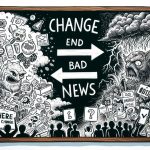Picture this: the busy corridors of a bustling hospital. The distant beep of monitors, the hurried whispers of nurses, and the hum of fluorescent lights overhead. This isn’t the latest episode of “Grey’s Anatomy” but rather the daily life in a hospital. And amidst this chaos, our newest protagonist emerges: Agile.
Now, before you raise an eyebrow and wonder if I’m about to suggest doctors start using Post-it notes during surgeries (I mean, how fun would that be?), let’s demystify this a bit. Just like trying to assemble a toy at 3 am on Christmas Eve without instructions, the world of healthcare is in dire need of some structured spontaneity. And that’s where Agile comes in.
Act 1: Triage and Backlog Grooming – The Unexpected Twins
Anyone who’s taken a minor tumble and ended up in the ER knows about triage. It’s the process of quickly assessing patients’ needs based on the severity of their condition. Sounds familiar? In the Agile world, we call it backlog grooming. Much like sorting through that drawer filled with miscellaneous cables and odd socks, medical professionals need to prioritize what’s pressing and what can wait.
Act 2: Sprints in Scrubs
Doctors don’t just wear comfy shoes because they’re stylish (though, let’s admit, they do rock them). They’re always on the go! In Agile terms, this is akin to ‘sprints.’ Short, focused bursts of energy to get tasks done efficiently. While software teams might be pushing code, doctors are pushing the boundaries of medical care, one sprint at a time.
Act 3: Iterative Diagnosis – The Post-it Approach to Medicine
Ever been to a doctor who, after a thorough examination, says, “Let’s try this approach for a week and then check back”? Well, congratulations! You’ve experienced iterative medical care. It’s like when you try organizing your pantry and start by putting all the cereals together, then realize halfway it’s more about sweet vs. savory. Adjustments are made, and life goes on.
Act 4: Collaboration Over Documentation
While medical charts are vital (no pun intended), the real magic happens during team huddles and over-the-counter discussions. The essence of Agile is valuing people and interactions over processes. It’s like when you and your partner figure out who’s cooking dinner based on the sheer intensity of each other’s “I had a day” rants.
Finale: Continuous Feedback and the Art of Bedside Manner
In the Agile world, retrospectives are the holy grail. Similarly, in healthcare, patient feedback, and post-care reviews can pivot treatment plans. Imagine if doctors worked on a two-week sprint, ending with a feedback session with the patient? “So, Mr. Smith, how do you feel about the care you received during our ‘Appendectomy Sprint’?”
Closing Credits:
The world of medicine, like many other sectors, is chaotic, unpredictable, and always evolving. But with a sprinkle of Agile magic (and maybe a few Post-it notes for good measure), there’s a method to the madness. Because whether it’s software development or saving lives, the goal remains the same: adapting, improving, and ensuring the best outcomes.
So, next time you’re in that cold, slightly uncomfortable hospital chair, waiting for the doctor, remember: they might just be wrapping up their daily stand-up. And if they whip out a colorful Post-it? Well, you’re in for a treat!






